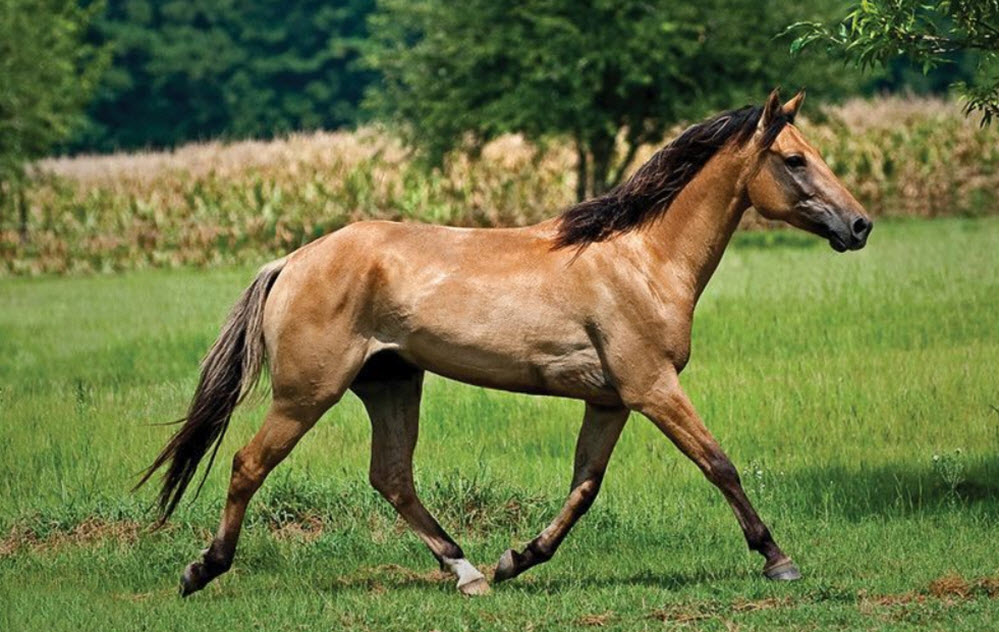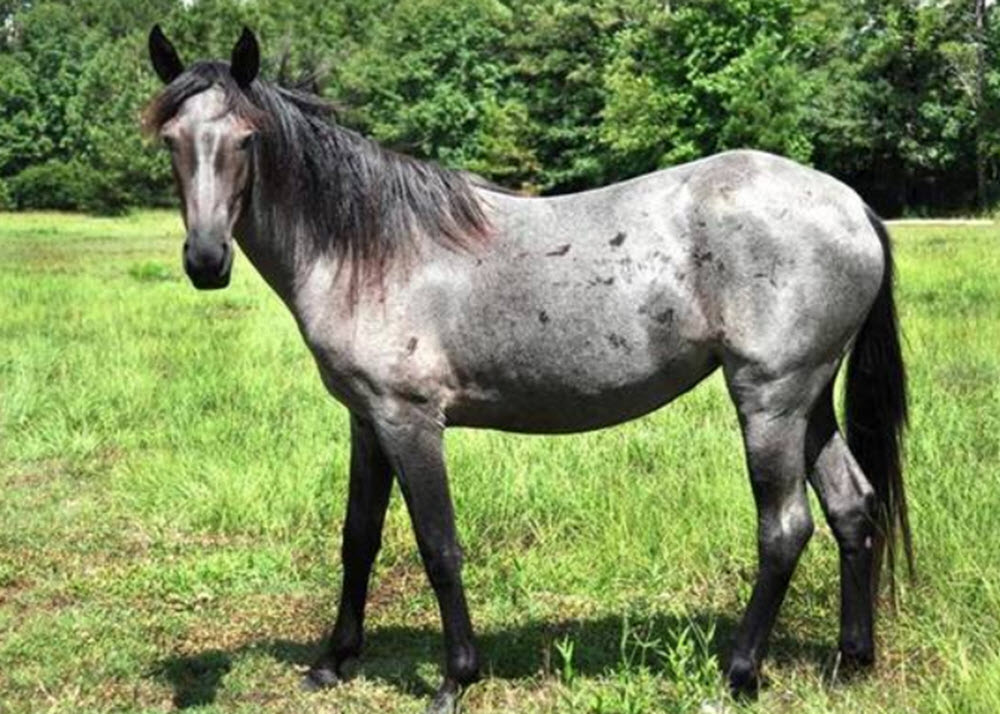On this page:
The Carolina Marsh Tacky, commonly known simply as Marsh Tacky, is a horse breed native to South Carolina. It’s a fairly small horse with a gentle disposition, and its sure-footedness makes is ideal for work in the lowland swamps of South Carolina.

For most of the breed’s history, it was the most common horse breed in the low-laying coastal regions of both South Carolina and Georgia. In English, tacky can mean common or cheap, and these horses were the most commonly available and low-priced horses in the region back in the days. At the height of the breeds popularity, it was the dominating horse breed from St. Simon’s Island in Georgia to Myrtle Beach in South Carolina.
In 2015, a complete, articulated horse skeleton was found at an archaeological dig in St. Augustine, Florida, on a site which once housed the Spanish Dragoon Barracks. This skeleton is believed to come from a Marsh Tacky that died there roughly 200 years earlier (early 1800s).
The Marsh Tacky is fairly closely related to the Florida Cracker horse and the North Carolina Banker horse. All three breeds developed from Spanish horses brought to the region during the Spanish colonial era.
State heritage horse
In June 2010, the Carolina Marsh Tacky was declared state heritage horse of South Carolina.
The Carolina Marsh Tacky Association
The Carolina Marsh Tacky Association was created in 2007 with the goal of preserving and promoting the breed.
The stud book was closed in 2010, but outside horses can still be registered if they fulfill certain requirements, including DNA confirmation of parentage.
The registry is maintained by the American Livestock Breeds Conservancy Pedigree Registry.
Gait
The Marsh Tacky is known for its four-beat ambling gait, with diagonal foot pairings and a period of quadrupedal support where all four feet are planted.
Work
The Marsh Tacky is ideally suited for working in the waterways and swamps of coastal South Carolina. It is a sure-footed horse that is well-adapted for this challenging environment. It is also an easy keeper, which means that it can survive on fairly small amounts of food.
Historically, these horses were considered an excellent riding horse for women and children, since Marsh Tacky horses are fairly small and have such a gentle nature.
Nowadays, many Marsh Tacky horses are utilized for hunting, herding cattle and endurance riding.
Physical characteristics
Height
The acceptable height for a Marsh Tacky is 13-15 hands, but most individuals are 14 hands or just slightly taller.
Color
The Marsh Tacky comes in a variety of colors, including black, chestnut, grullo, dun, bay, and roan.
Historically, some individuals displayed pinto and similar multi-colored patterns, but this has been bred out from the breed.
Body shape
- Pronounced withers
- Short and strong back
- Steeply angled croup
- Deep but narrow chest
- Legs with long, tapering muscling
- There is usually no feathering on the lower legs
- Long and angled shoulder
- Were neck is common in the breed
- The neck is attached comparatively low on the chest
- The head is usually flat or slightly concave, becoming convex from the nasal region to the top of the muzzle
- The forehead is wide
- The eyes are set well apart

History
The Carolina Marsh Tacky hail partly from Spanish horses brought to the coastal parts of South Carolina by Spanish explorers and colonizers. The Spanish brought horses to this part of the Americas very early; from the 1500s and onward.
At one point in history, it became fairly common for traders to purchase horses at Saint Augustine (a Spanish settlement in Florida), use them as beasts-of-burned on Native American trade routes, and then sell them as the cargo reached Charleston, South Carolina. These horses were left to survive largely unattended in feral herds, from which horses would be rounded up and taken as the need for a horse arose.
American Revolution
During the American Revolution, the irregular forces led by Francis “Swamp Fox” Marion utilized Carolina Marsh Tacky horses. This is believed to have given these revolutionaries an advantage over the British cavalry, who used larger horses that were not accustomed to moving around in swamps.
World War II
During World War II, Carolina Marsh Tackies were used by the patrols responsible for the surveillance of the South Carolina beaches.
Post-war
Just like many other horse breeds, the Carolina Marsh Tacky became less sought after as motorized vehicles became more common in the 20 th century. Today, it is considered a rare horse breed.
The Gullah Cultural Festival
During the annual Gullah Cultural Festival, Carolina Marsh Tacky races take place on beaches.
The Gullah is a African American population associated with the Lowcountry region of South Carolina, Florida and Georgia, including the Sea Islands. After the American Civil War, they began using Carolina Marsh Tacky horses for work on their fields and gardens on islands off the South Carolina shore.
